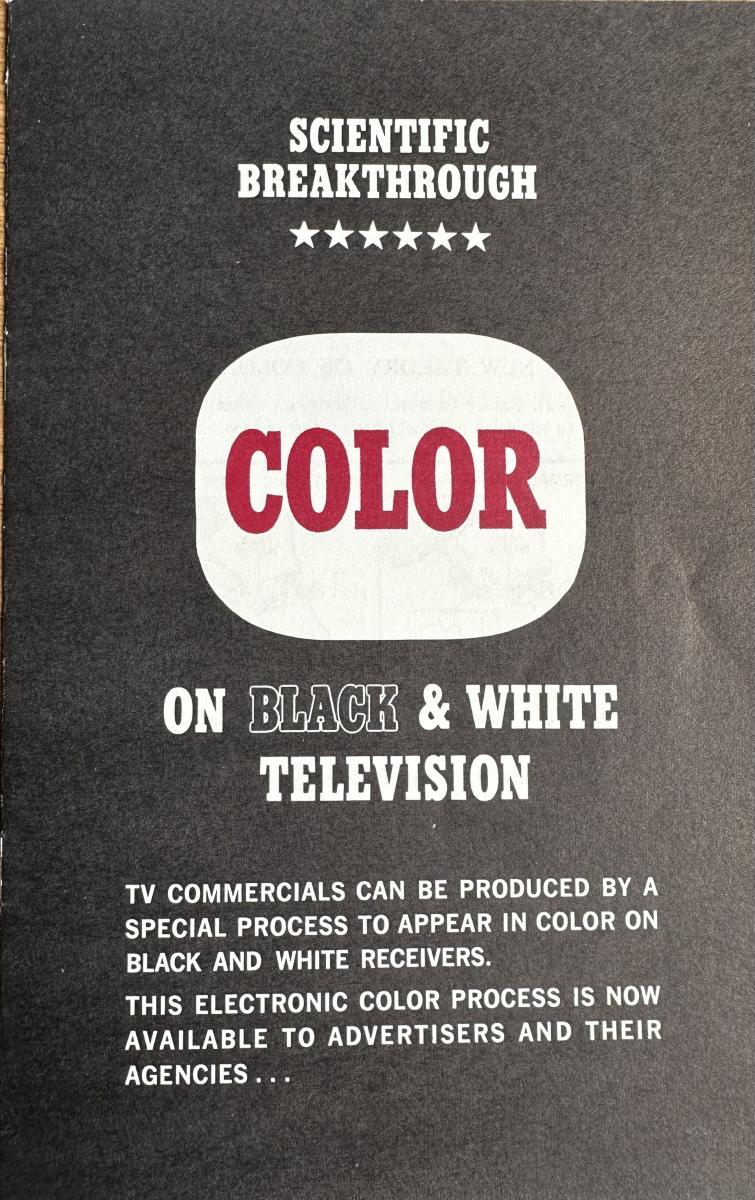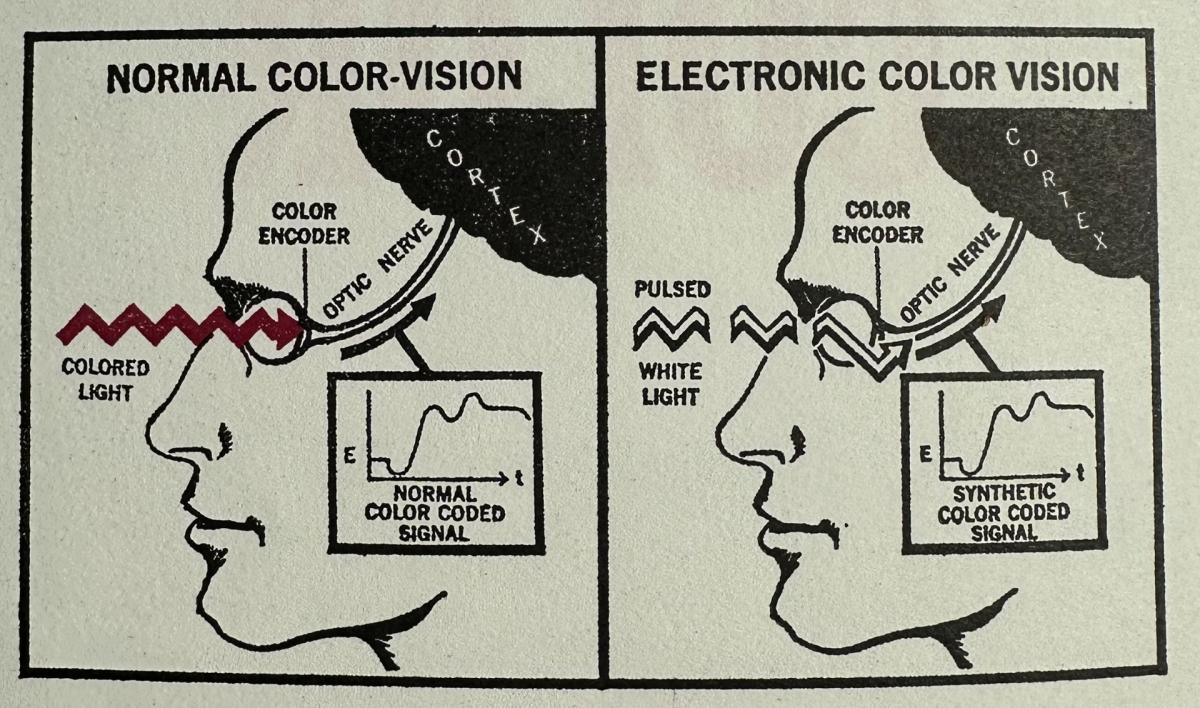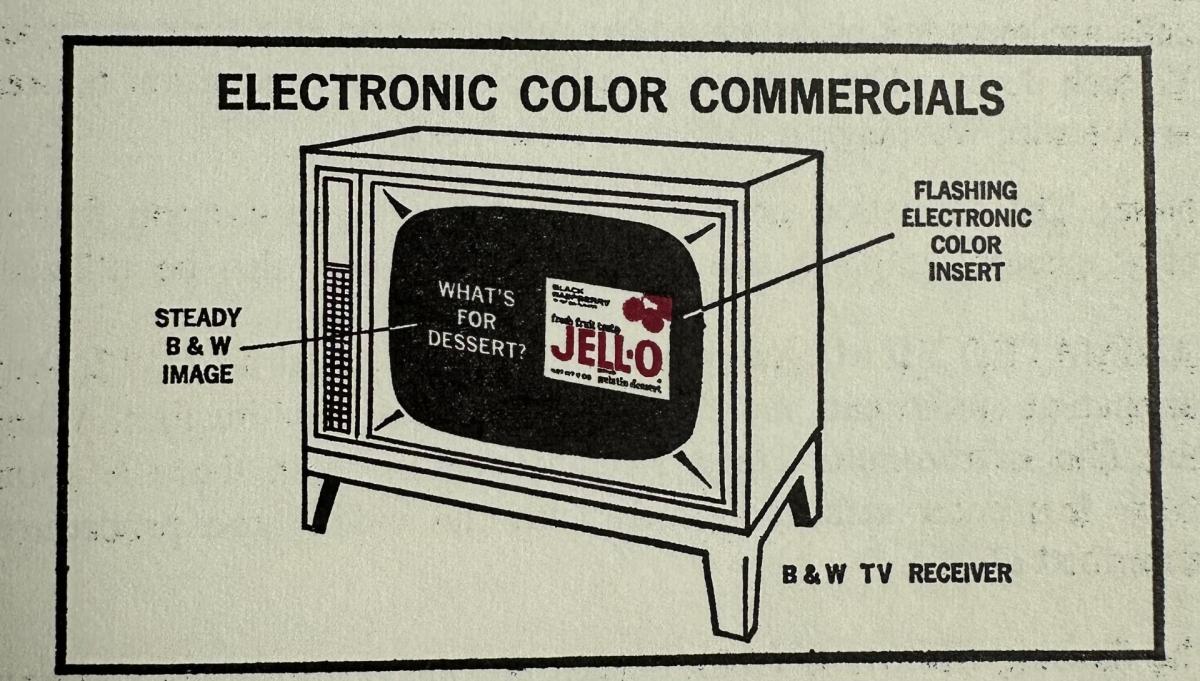 Long before color television became a common thing, the majority of homes that did have television sets had black-and-white television. Black-and-white remained the standard for television transmission for 30 years, from 1936-1967. When color television and color broadcast was first introduced in 1953, many people could not afford to upgrade to a color television set. Also, the television stations were not able to invest in the expensive new equipment or technicians necessary for color broadcast if there weren’t enough color television viewers. However, there were plenty of ingenious ideas to help existing black-and-white television sets produce a color image from a black-and-white broadcast. One of the most notable ideas is called “subjective color.”
Long before color television became a common thing, the majority of homes that did have television sets had black-and-white television. Black-and-white remained the standard for television transmission for 30 years, from 1936-1967. When color television and color broadcast was first introduced in 1953, many people could not afford to upgrade to a color television set. Also, the television stations were not able to invest in the expensive new equipment or technicians necessary for color broadcast if there weren’t enough color television viewers. However, there were plenty of ingenious ideas to help existing black-and-white television sets produce a color image from a black-and-white broadcast. One of the most notable ideas is called “subjective color.”
Subjective color is actually a very old discovery that dates to the early nineteenth century. It was discovered by a French Monk, Benedict Prevost, when he realized that a black-and-white object moved in a ray of sunlight in a darkened room would produce a spectrum of color. By the end of the nineteenth century, C.E. Benham had improved upon earlier research which found that a black-and-white disc rotating below the speed at which the rotating could be detected produced an array of colors. This led to the finding that when a black-and-white camera is pointed at a spinning Benham disk, lines of color appear on a black-and-white receiver. In 1967, James F. Butterfield would incorporate the Benham disc with pulsed light to create subjective color television.
 Butterfield used pulsed white light that replicated the electronic signal sent from the eye to the cortex of the brain to create the perception of color on a black and white television screen. An Electronic Color Translator and Color-Coding Charts were developed and used to analyze the scene into primary-colored images and then code them into a series of black and white pulses. The viewer’s eyes are triggered by these pulses and send signals to their brain that interpret the scene in color. The color that was perceived by the viewers was not bright saturated color as with actual color television and was inconsistent depending on various factors in the viewer’s home such as light in the room and location of the television. This technology was not ever fully realized and was mostly employed by advertisers for commercials.
Butterfield used pulsed white light that replicated the electronic signal sent from the eye to the cortex of the brain to create the perception of color on a black and white television screen. An Electronic Color Translator and Color-Coding Charts were developed and used to analyze the scene into primary-colored images and then code them into a series of black and white pulses. The viewer’s eyes are triggered by these pulses and send signals to their brain that interpret the scene in color. The color that was perceived by the viewers was not bright saturated color as with actual color television and was inconsistent depending on various factors in the viewer’s home such as light in the room and location of the television. This technology was not ever fully realized and was mostly employed by advertisers for commercials.

As we know, color television would become the standard and black-and-white television would become obsolete. But for a short time, there was a real interest in creating color images for the existing black-and-white television sets that were prevalent before color television broadcasts and sets were commonplace.
Alexis Jimenez is the Processing Archivist at Hagley Museum and Library
